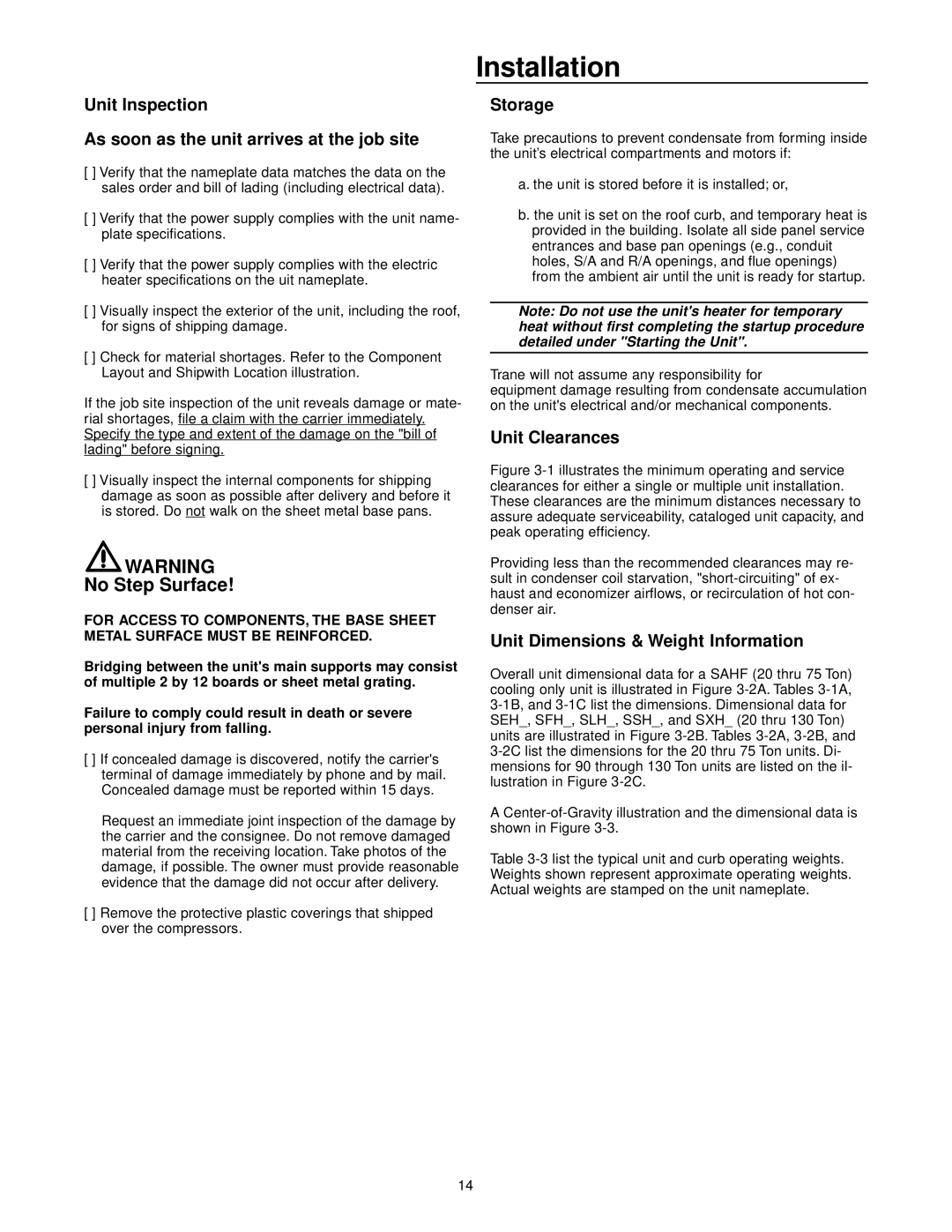
Unit Inspection
As soon as the unit arrives at the job site
[ ] Verify that the nameplate data matches the data on the sales order and bill of lading (including electrical data).
[ ] Verify that the power supply complies with the unit name- plate specifications.
[ ] Verify that the power supply complies with the electric heater specifications on the uit nameplate.
[ ] Visually inspect the exterior of the unit, including the roof, for signs of shipping damage.
[ ] Check for material shortages. Refer to the Component Layout and Shipwith Location illustration.
If the job site inspection of the unit reveals damage or mate- rial shortages, file a claim with the carrier immediately. Specify the type and extent of the damage on the "bill of lading" before signing.
[ ] Visually inspect the internal components for shipping damage as soon as possible after delivery and before it is stored. Do not walk on the sheet metal base pans.
![]() WARNING
WARNING
No Step Surface!
FOR ACCESS TO COMPONENTS, THE BASE SHEET METAL SURFACE MUST BE REINFORCED.
Bridging between the unit's main supports may consist of multiple 2 by 12 boards or sheet metal grating.
Failure to comply could result in death or severe personal injury from falling.
[ ] If concealed damage is discovered, notify the carrier's terminal of damage immediately by phone and by mail. Concealed damage must be reported within 15 days.
Request an immediate joint inspection of the damage by the carrier and the consignee. Do not remove damaged material from the receiving location. Take photos of the damage, if possible. The owner must provide reasonable evidence that the damage did not occur after delivery.
[ ] Remove the protective plastic coverings that shipped over the compressors.
Installation
Storage
Take precautions to prevent condensate from forming inside the unit’s electrical compartments and motors if:
a. the unit is stored before it is installed; or,
b. the unit is set on the roof curb, and temporary heat is provided in the building. Isolate all side panel service entrances and base pan openings (e.g., conduit holes, S/A and R/A openings, and flue openings) from the ambient air until the unit is ready for startup.
Note: Do not use the unit's heater for temporary heat without first completing the startup procedure detailed under "Starting the Unit".
Trane will not assume any responsibility for
equipment damage resulting from condensate accumulation on the unit's electrical and/or mechanical components.
Unit Clearances
Figure 3-1 illustrates the minimum operating and service clearances for either a single or multiple unit installation. These clearances are the minimum distances necessary to assure adequate serviceability, cataloged unit capacity, and peak operating efficiency.
Providing less than the recommended clearances may re- sult in condenser coil starvation, "short-circuiting" of ex- haust and economizer airflows, or recirculation of hot con- denser air.
Unit Dimensions & Weight Information
Overall unit dimensional data for a SAHF (20 thru 75 Ton) cooling only unit is illustrated in Figure
A
Table
14
